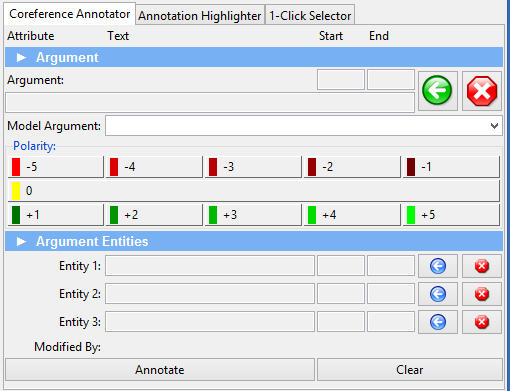NOMAD Annotation Tool - The Annotation Task
Article Index
Page 3 of 4
The Annotation Task
The task is to annotate documents with arguments. An argument is a statement in favor or against something. For example, an argument in favor of "wind turbines" is that they "generate electricity", and an argument against is that "they are expensive" or "they generate noise". For each argument, the annotator has to decide (and annotate):

- An argument from the NOMAD model. The NOMAD model is a 4 level hierarchy: the first level is the domain (i.e. "energy"), the second level is the policy (i.e. "reduction of oil consumption"), the third level is the norm (i.e. "increase biofuel usage"), and finally the last level is the argument (i.e. "reduces carbon emissions"). Any argument found in text, must be matched with an argument from the NOMAD model. If a suitable argument cannot be found, a new argument must be created.
- The text segment (i.e. a phrase) from the document, which describes the argument in the document's text.
- The polarity of the document (negative, positive, or neutral). This describes whether the argument is favor or against the policy/norm. The polarity must be encoded with "strength" denoting the importance of the argument. For example, an argument that "is not aesthetically appealing" is a negative one with a low "strength" (i.e. "-1"), while the argument "causes lethal accidents" may receive "-5".
- A set of entities that relate to the argument, usually denoting what the argument is for. For example, in the sentence "Wind turbines can cause accidents", "Wind turbines" is an entity for argument "cause accidents", which has a polarity of "-4".


